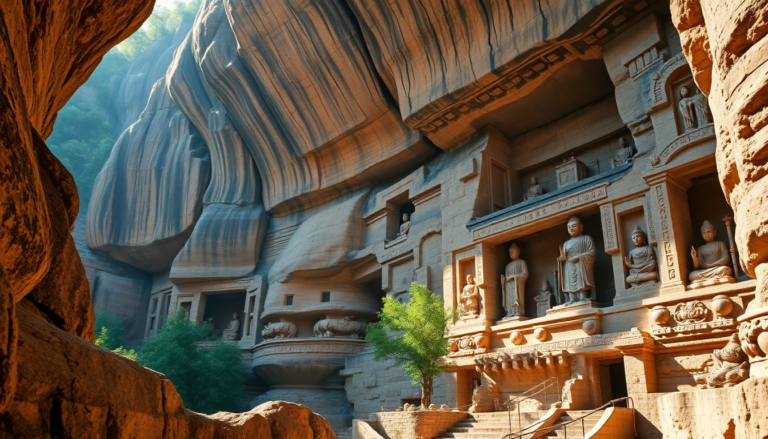Argomenti trattati
Imagine standing before a rock face that has been transformed into a canvas of devotion and artistry over centuries. The Longmen Caves, also known as the Dragon’s Gate, are more than just a collection of caves; they are an epic narrative carved into stone that has captivated hearts and minds for over a thousand years. Located just twelve kilometers from Luoyang in Henan Province, these caves are a testament to the incredible craftsmanship and spiritual dedication of ancient Chinese artisans. As I walked through this stunning site, I couldn’t help but feel a profound connection to the countless pilgrims and artists who had tread the same paths before me.
Unveiling the longmen caves
When you hear the term ‘Longmen Caves’, what comes to mind? For many, it’s synonymous with a spiritual journey through a breathtaking landscape filled with intricate sculptures and hidden stories. This remarkable site, which took over four centuries to complete, has been sculpted by six different dynasties, each leaving its unique mark. As I explored, I was struck by how the natural beauty of the surrounding cliffs harmonized with the masterful carvings of over 100,000 Buddhist figures, including 2,345 caves and niches, each whispering tales of faith and artistry.
As I stood before one of the most significant carvings, I felt a rush of reverence wash over me. Here, amidst the grandeur of rock and stone, is where the essence of Buddhist philosophy and artistic expression intertwine. The Longmen Caves are truly a museum under the open sky, showcasing not only the spiritual aspirations of the time but also the evolution of Chinese art.
A journey through time and artistry
One of the first stops on my adventure was the central Binyang Cave, a stunning masterpiece from the Northern Wei Dynasty. The towering figure of Buddha Sakyamuni, with his serene expression and outstretched hands, seems to offer compassion to all who gaze upon him. Accompanied by fiercely protective stone lions and surrounded by devoted disciples, the atmosphere was nothing short of magical. I remember standing there, enveloped in silence, pondering the weight of history that this cave has witnessed.
Continuing my exploration, I stumbled upon the Fengxian Temple, the largest of the caves. This majestic site, a product of the Tang Dynasty, boasts the awe-inspiring statue of Buddha Lohan, which reaches an impressive height of 17 meters. The details in the sculpture are breathtaking; the gentle smile on Buddha’s face radiates a sense of calm that resonates deeply within. It is said that even Empress Wu Zetian herself visited this cave, participating in solemn ceremonies that celebrated the teachings of Buddha. Can you imagine the atmosphere during such sacred gatherings?
But not all treasures here are grand; some are more subtle yet equally significant. The Guyang Cave, though not the largest, is one of the oldest and is densely packed with intricate carvings. As I walked through its dimly lit passageways, I felt as though I was stepping into a time capsule of devotion. Hundreds of statues, each with names inscribed by devoted artisans, filled the space with a sense of warmth and history. I paused to reflect on the dedication it took to create such a sanctuary, and it struck me how this place is a true testament to the human spirit.
Located along the limestone cliffs by the Yi River, the Longmen Caves are not just a visual feast; they are a journey through time. The site has been recognized as a UNESCO World Heritage site since 2000, a designation that underscores its global significance. For anyone traveling from Italy, the adventure begins with a flight to Beijing, Shanghai, or Xi’an, followed by a swift train or internal flight to Luoyang. From there, it’s just a short ride to witness this extraordinary marvel. Group tours are also available, offering deeper insights into the rich history of this sacred site. Personally, I find that guided tours enrich the experience, as knowledgeable guides breathe life into the stories behind each sculpture.

